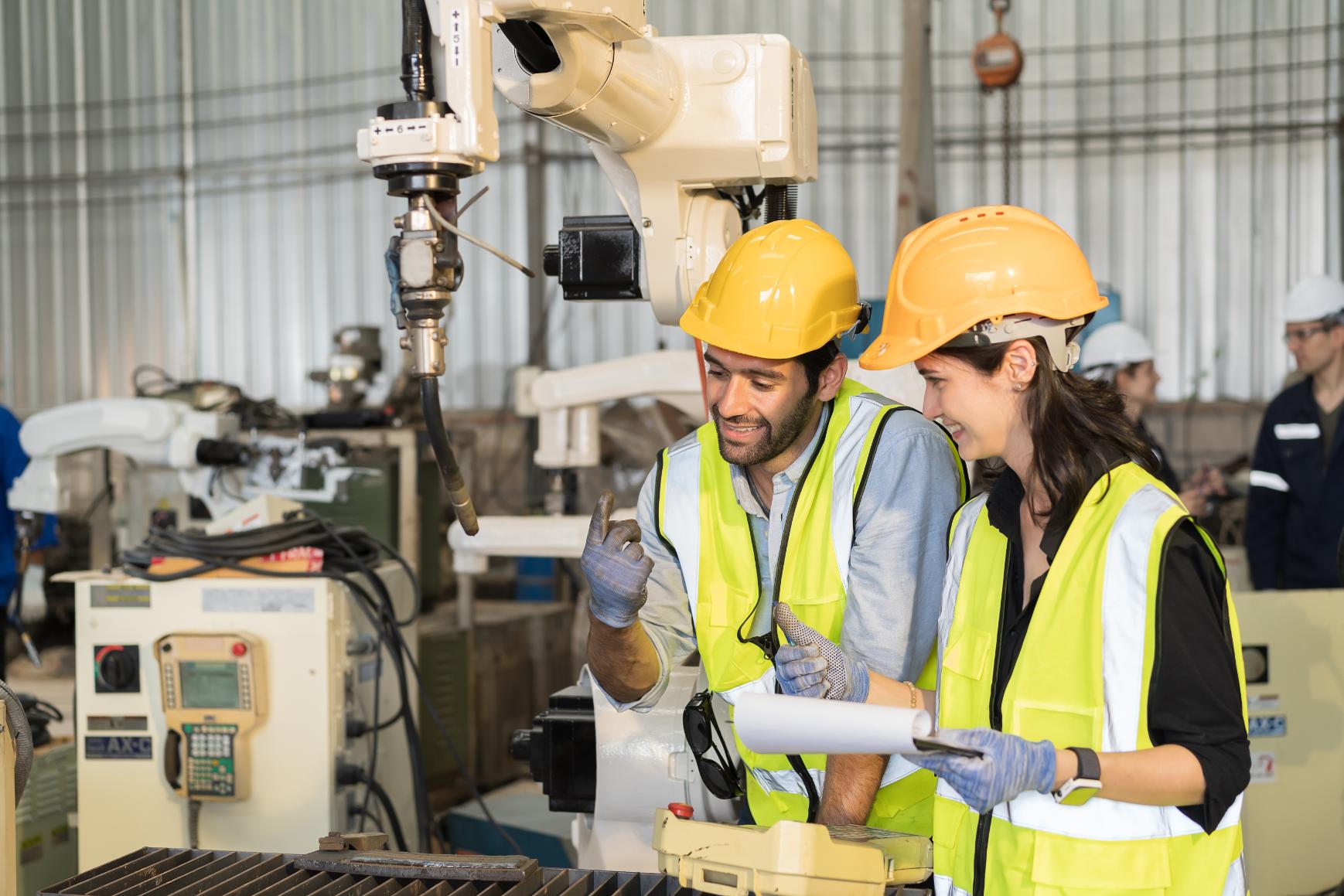In the rapidly evolving landscape of artificial intelligence, large language models (LLMs) have emerged as powerful tools with far-reaching implications across industries. Capable of understanding and generating human-like text, these sophisticated AI systems have revolutionized natural language processing and opened up new possibilities in fields ranging from content creation to complex problem-solving. As we navigate through 2024, the quest for the best LLM has intensified, with major players like OpenAI, Anthropic, Google, and Meta pushing the boundaries of what is possible in AI language understanding and generation.
The stakes in this AI race are high, as LLMs are increasingly being integrated into business operations, research endeavors, and everyday applications. Each model brings its unique strengths to the table, whether it is GPT-4’s versatility, Claude’s ethical approach, Gemini’s problem-solving capabilities, or Llama 3’s efficiency. Understanding the nuances of these models—their capabilities, limitations, and potential applications—has become crucial for organizations and individuals looking to harness the power of AI.
This guide offers a comprehensive overview of the leading LLMs, delving into their architectural differences, performance benchmarks, and specialized features. We will also look ahead to the future of LLM development. Whether you are a business leader, a developer, or simply an AI enthusiast, this exploration of the LLM landscape will provide you with the insights needed to make informed decisions in this exciting and rapidly changing field of artificial intelligence.
Overview of the major (best?) LLM models
The landscape of large language models has evolved rapidly, with several key players emerging as leaders in the field. On our way to finding the best LLM for your use case, let us examine a few examples of the most prominent LLM models available in 2024:
GPT-4 and GPT-4 Turbo (OpenAI)
OpenAI’s GPT models are undoubtedly the best-known large language models, having started the current AI gold rush with their unprecedented ability to generate human-like responses to text. While other models have been made public since, the GPT series still represents the cutting edge of natural language processing and ranks among the best large language models. Released in 2023, it marked a significant leap forward in natural language processing capabilities. GPT-4 Turbo offers high speed and efficiency in real-time applications, while GPT-4o provides advanced multimodal capabilities, processing both text and images (voice processing is still in development), and superior handling of complex tasks, making it better suited for content creation and detailed analysis. These large language models demonstrate improved reasoning and task completion abilities, making them versatile tools for a wide range of applications. Compared to their predecessors, these models have been fine-tuned for better alignment with human values and safer outputs, addressing some of the ethical concerns surrounding AI development.
Importantly, GPT models from the fourth-generation underlay Microsoft’s Copilot and are embedded in the Azure Open AI environment. The latter in particular makes them especially attractive (compared to other models) for research and commercial use cases where Azure infrastructure is already being used.
Read more on AI
Small language models (SLMs)—a gentle introduction
Generative AI implementation in business: how to do it responsibly and ethically
AI in manufacturing: Four nonobvious implementations
Ten business use cases for generative AI virtual assistants
Generative AI in knowledge management—a practical solution for enterprises
Is ChatGPT dreaming of conquering the world? Generative AI in business
The power of generative AI at your fingertips—Azure OpenAI Service
Unleash your superpowers with new Power Platform AI capabilities
Curbing ChatGPT hallucinations with retrieval augmented generation (RAG)
The Claude family: Haiku, Sonnet, Opus (Anthropic)
The Claude family of LLM models is an example of constitutional AI, an innovative approach to training AI systems developed by Anthropic that embeds ethical principles and desired behaviors directly into the model during the training process. Rather than applying rules or filters after training, this method aims to “constitute” the AI with a set of predefined guidelines that inform its decision-making and outputs. The training data for Claude is carefully curated to meet these requirements, and the process involves self-supervision, where the language model critiques and refines its own responses to better align with its constitutional principles. This approach seeks to achieve more ethically aligned, consistent, and transparent natural language processing, potentially reducing the need for post hoc content filtering. Thus, constitutional AI represents a significant step toward developing large language models that are both powerful and aligned with human values.
Anthropic’s large language models have gained prominence for these ethical design principles and their strong performance. The family includes Claude 3/3.5 Haiku, optimized for speed and efficiency in daily tasks; Claude 3/3.5 Sonnet, which balances performance and speed for a wide range of applications; and Claude 3/3.5 Opus, which excels in complex reasoning and creative tasks. This variety is an important consideration for organizations seeking the best large language models for their use cases, as they can choose the language models that best suit their needs.
The Claude language models have also demonstrated impressive performance on various benchmarks. At the time of writing, Claude 3.5 Sonnet scores an average of 88.38% across the MMLU (a broad language understanding benchmark covering diverse subjects), HellaSwag (a commonsense reasoning test requiring prediction of scenario endings), HumanEval (a coding benchmark that assesses the generation of Python function bodies), BBHard (focused on challenging language tasks), GSM-8K (a benchmark assessing grade-school-level mathematical problem-solving), and MATH (a high-school-level math benchmark demanding deep mathematical reasoning) benchmarks, outperforming both its predecessor and the competition. This is not to say it is the best LLM in every metric—for instance, GPT-4 scores higher on the HellaSwag reasoning benchmark, although it is in turn outperformed by Claude 3.5 Opus, which scores very similar to Sonnet on average.
Another of the Claude large language models’ unique features is its emphasis on transparency, with the large language models being more forthcoming about their limitations and uncertainties (rather than hallucinating, as earlier language models were prone to do).
Gemini (Google)
Google’s Gemini, the successor to its earlier Bard language model, represents the tech giant’s most advanced natural language processing system to date. Gemini is designed with multimodal capabilities, integrating text, image, and, potentially, audio inputs. This model is particularly noted for its prowess in reasoning and problem-solving tasks, pushing the boundaries of what AI can achieve in terms of complex cognitive processes. As expected from Google, Gemini is optimized for efficiency and scalability, making it suitable for a wide range of applications. Like Claude, Gemini comes in three flavors with different models offering a varying mix of speed and complexity, allowing users to choose the best LLM for a particular application. However, Gemini’s greatest advantage is its seamless integration with Google’s ecosystem of products and services, which provides an added advantage for users already invested in the Google environment.
Llama 3 (Meta)
Meta’s Llama large language models, with Llama 3 as their latest iteration, have made waves in the AI community for its open-source approach and strong performance. The open-source nature of some of the Llama models allows for greater transparency and customization, fostering a collaborative environment for AI development. Despite being open-source, they offer performance that is competitive with proprietary language models in many tasks. According to Meta, Llama 3 70B outperforms both Gemini models and Claude 3 Sonnet (Anthropic’s middle-of-the-road language model) on MMLU, HumanEval, and GSM-8K benchmarks. More interestingly, Llama 3 8B outperforms the still popular GPT-3.5 large language model on MMLU, HumanEval, BBHard, GSM-8K, and MATH.
Why is this significant? At this point, it is important to explain what the B stands for: billions of parameters in a large language model. So, 8B is 8 billion parameters and 70B is 70 billion parameters. By comparison, GPT-3 has 175 billion parameters. Normally the number of parameters translates to better outcomes in larger models, so the fact that Llama 3 can outcompete a large language model two orders of magnitude bigger than itself is quite astonishing. Meta achieves this result by (in simplified terms) allowing its large language models to spend more time learning with more training data. As it turns out, even a smaller model has a lot of capacity for improvement if given enough training data and time.
Having significantly fewer parameters also means that the large language model needs less computational resources. So, Llama 3 might be a good choice for those who need a lightweight but capable model to fine-tune to their own needs. All in all, it is designed for efficient fine-tuning and deployment, making it an attractive option for researchers and developers looking to adapt the model to specific use cases. The strong community support behind Llama 3 ensures ongoing improvements and a rich ecosystem of tools and resources.
Mistral AI models
Mistral AI, a relatively new player in the field, has quickly gained attention for its innovative approach to language model development. The company focuses on creating smaller, more efficient models without sacrificing performance, addressing the growing concern over the computational resources required by large AI models. Only the largest Mistral model (8x22B) has over 100 billion parameters, with others ranging from 7 to 40 billion parameters, putting Mistral more in the “small language model” category. And yet, Mistral 8x7B easily holds its own against GPT-3.5 on most benchmarks, despite having significantly fewer parameters. It’s not as impressive as Llama 3, but it is still pretty good.
Mistral is also the only major generative pretrained transformer model (i.e., a model based on transformer architecture, pretrained on large datasets of unlabeled text, and capable of generating human-like content) developed outside the USA. This is probably why Mistral’s models place a strong emphasis on using multiple languages, making them particularly useful in global and diverse linguistic contexts. They are designed for easy deployment and integration in various applications, lowering the barrier to entry for AI implementation. Mistral AI is characterized by its rapid iteration and improvement cycle, continuously pushing the boundaries of what is possible with more compact AI models.
Open-source LLMs: democratizing artificial intelligence
These popular models represent the current state of the art in artificial intelligence for textual data analysis, language understanding and language generation. While proprietary large language models from tech giants dominate the headlines, open-source machine learning models have been gaining significant traction, playing a crucial role in democratizing artificial intelligence technology and fostering global innovation. Platforms like Hugging Face have become central repositories for a broad range of open-source language models, each with unique specialties. These models offer several advantages:
- Transparency: Allowing the underlying neural network architecture and training processes to be examined.
- Customization: Allowing users to fine-tune the machine learning model for specific tasks with their own data without hefty proprietary costs.
- Collaboration: Facilitating community-driven improvements and adaptations.
Some of the best large language models in the open-source space include BLOOM (a multilingual model with 176 billion parameters), GPT-J (offering GPT-3-like capabilities), and ongoing adaptations of BERT and T5 models.
However, users should be aware that “open-source” does not always mean free for commercial use. Careful review of licensing terms is essential before deployment. While open-source models democratize access to AI technology, it is important to note that training and deploying these models still requires significant computational resources. This has led to a growing ecosystem of cloud services and specialized hardware to support their implementation. As the field progresses, we can expect continued innovation in open-source models, which will become more efficient, more fine-tuned, and easier to deploy, further lowering barriers to AI adoption across various industries.
Each generative pretrained transformer model has its unique strengths and focus areas, catering to different use cases and requirements. As we compare their capabilities and performance, it is important to note that the field of AI is rapidly evolving, with new advancements and models emerging regularly.
The large language model of the future
The most recent qualitative shift in large language model development is the introduction of multimodal capacity, allowing models to go beyond language understanding to not only generate code and human-like text based on text prompts but also analyze data from images, including extracting contextually relevant text data or performing document analysis on uploaded files. We can expect continued advancements in multimodal integration, with future LLMs becoming more adept at processing user input in various forms and generating various types of data beyond just text. OpenAI and Google are already working on analyzing data from user voice input and voice content generation that relies on deep learning rather than simply combining traditional voice recognition and text-to-speech (TTS) technology with a large language model.
Improvements in reasoning, problem-solving, and long-term memory are also on the horizon. These enhancements could lead to more sophisticated logical abilities and improved coherence over extended interactions. Additionally, we’re likely to see a trend toward more customized, more specialized models based on users’ own datasets and fine-tuned for specific industries or tasks.
Looking further into the future, some researchers envision models capable of continuous learning, moving closer to artificial general intelligence (AGI). Others predict a shift toward modular, task-specific AI systems that can be combined as needed. However, it is crucial to note that the development of future LLMs will be shaped not just by market research and by technical possibilities but also by ethical considerations, regulatory environments, and societal impacts.
GPT-5
Speculations about GPT-5 and beyond are abundant in the AI community. While OpenAI hasn’t officially announced GPT-5, industry trends suggest it might prioritize efficient use of parameters over significant size increases. While the historical trend has been toward larger models with more parameters, we may be approaching a turning point. Future developments are likely to focus on efficiency rather than sheer size. Enhanced reasoning capabilities, improved factual accuracy, and better understanding of context and nuance are likely goals. This is evidenced by Sam Altman’s recent remarks. In short, Altman believes that the era of ever larger models is over and that future developments lie in getting better outcomes in complex tasks with similarly sized models.
Future models may not necessarily grow larger but instead be smarter in how they utilize their parameters, leading to improved computational efficiency and broader deployment possibilities. This is reasonable, as the computational power needed for running current models is already huge and there seem to be diminishing returns from growing the models further. Meta’s successes in reaching the same performance with its significantly lighter Llama 3 transformer architecture, with less focus on the number of parameters and more on training, proves that this is a viable way forward.
As these models become more powerful, questions of AI safety, transparency, and governance will become increasingly important. While the exact path of LLM development remains uncertain, the field of AI is poised for continued rapid evolution, promising exciting advancements and new challenges in the years to come.
Conclusion
In the current landscape of large language models, it is clear that the field is rapidly evolving with each model offering unique strengths and capabilities. While the GPT-4, Claude, Gemini, and Llama 3 models lead the pack, the choice of the “best” LLM ultimately depends on specific use cases, ethical considerations, and resource constraints.
When selecting an LLM for your specific needs, several crucial factors must be considered. One of the primary considerations is latency, or response time, which can significantly impact user experience and the efficiency of your applications. Another important aspect is the cost of maintaining the model and the entire cloud infrastructure required to support it. Additionally, it is essential to evaluate how well the model fits your specific task or use case. Contrary to popular belief, bigger models are not always better. In fact, a smaller, more specialized model might outperform a larger, more general one for certain tasks. The key is to find the right balance between performance, speed, and resource requirements that aligns with your specific goals and constraints.
Finally, the trend toward more efficient, multimodal, and ethically aligned models suggests a future where AI becomes increasingly integrated into our daily lives and business operations. However, as these models grow more powerful, the importance of responsible development, deployment, and governance cannot be overstated.
The power of LLMs at your fingertips
At Fabrity, we harness the power of LLMs and advanced RAG techniques to build AI virtual assistants that are able to provide you with answers grounded in verified knowledge. If you are interested in seeing how generative AI can streamline your business processes, we are here to help. We can build a dedicated demo of our knowledge management solution based on Azure OpenAI LLMs and retrieval augmented generation. Here’s how the process works:
- Use case analysis: We begin by analyzing potential use cases which may include technical documentation, internal knowledge bases, customer support documentation, and product catalogs.
- Document collection: We gather all the source documents necessary for your project.
- Infrastructure setup: We establish the required Azure infrastructure to support the solution.
- Custom training: We train the solution using your specific documentation to ensure it meets your unique needs.
- Testing and optimization: We rigorously test and optimize the solution to maximize its effectiveness and efficiency.
Once the training data is assembled, the entire process to develop a customized demo of an AI-powered knowledge management solution typically takes about two to three weeks.
Please feel free to reach out to us at sales@fabrity.pl. We look forward to discussing your specific needs and requirements in detail.










